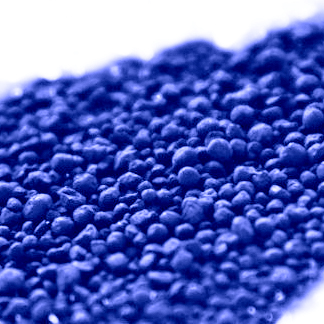
Posted on August 10th, 2018 by Carrier Vibrating
When many materials are dried and processed they become a fine powder or are small irregular shapes, which causes them to be difficult to handle or creates issues with further processing. Through the use of agglomeration, these problematic materials become more manageable and even sized.
Agglomeration is a process of enlarging and standardizing particle size by transforming dusty or hard to use material fines into a dry granular shape. This makes the material easier to transport and use, reduces dust and lost product, and helps with any further material processing required.
There are two ways to perform agglomeration depending on the material and its characteristics: pressure agglomeration and wet agglomeration. Pressure agglomeration uses high pressure in the form of compactors to cause the material to adhere to itself. If the material does not adhere to itself under pressure then a wet agglomeration must be used, where a liquid binder is mixed with the material while it is in motion, causing it to stick together either by causing the material to become tacky or by creating a chemical reaction that bonds the material together. These agglomerated pellets are then dried and processed as needed.
Advantages of Performing Agglomeration
Uniform Particle Size and Shape
Many materials, such as limestone or coal, will have particles in uneven sizes and shapes even when ground into a bulk powder, making it hard to use or process them uniformly. Agglomeration ensures that each particle has a uniform size and shape, eliminating any issues that come from trying to process with uneven sizes.
Defined Bulk Density
When materials are agglomerated the density of each pellet can be uniform, and when the pellets are stored together the material bed is packed looser than if it was the powdered material. This allows any sort of requirement for permeability to be achieved, whether to add more chemicals, leach out materials, or use the material as a final product. Instead of uneven permeability from a dense bed of raw material, there will be an even flow with the agglomerated pellets.
Reduced loss and waste
When material is dusty or being transported and processed as small fines there will be product waste that gets contaminated or lost. Depending on the flammability of the dust, this lost product might also cause a fire or explosion hazard and will cause a safety risk or OSHA fines. When these dusty materials are agglomerated into pellets there is significantly less dust and very little loss or safety issue.
Easier transport and use
Raw powder is sometimes hard to control when feeding or using and does not flow evenly, but evenly sized pellets are much easier to transport and use, and will have a consistent and easily controlled flow rate.
Interested in seeing how a Carrier Vibrating Equipment machine can help with your material agglomeration process?







